From the high plains that make up the east of the state, to the mountain peaks that dominate the west, Colorado offers a diverse landscape to accommodate a wide range of bird species.
Many of the sparrows that live here migrate from one side of the state to the other during the spring and fall migrations and several species are confined to local populations.
So, whether you’re a local in Colorado or just a bird watcher passing through the state, you might be surprised by what a wide variety of sparrow species you can find here.
Colorado has even chosen one particularly beautiful sparrow as its official state bird. Can you guess which one it is?
Here is a list of 20 sparrows in Colorado, starting with the most commonly seen, and ending with the rarest, most highly prized sightings!
Colorado’s Sparrow Species: Identification and Habitat
Dark-eyed Junco
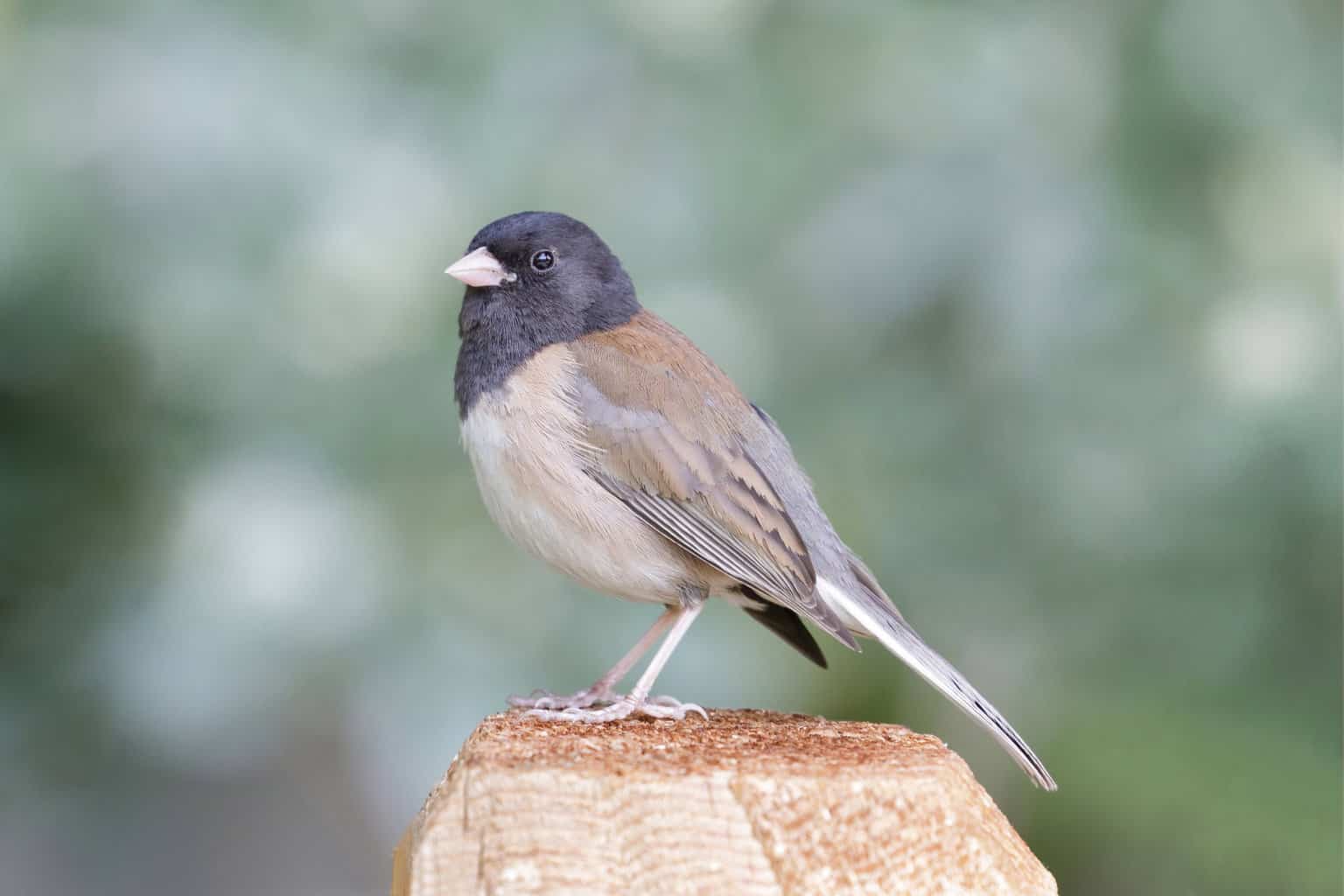
- Scientific Name: Junco hyemalis
- Length: 5.5-6.3 in (14-16 cm)
- Weight: 0.6-1.1 oz (18-30 g)
- Wingspan: 7.1-9.8 in (18-25 cm)
The dark-eyed junco is one of the most common sparrows in the United States, and Colorado is no exception. You’re far more likely to see this species here than any other sparrow in the state!
Although not always thought of as sparrows, dark-eyed juncos are part of the New World sparrow family that makes up the majority of sparrow species in North America.
Colorado is right on the edge of the dark-eyed junco’s breeding grounds, so you’ll only find them nesting in the western half of the state. In winter, though, huge flocks return from their more northerly and westerly breeding grounds and can be seen all over.
Song Sparrow

- Scientific Name: Melospiza melodia
- Length: 4.7-6.7 in (12-17 cm)
- Weight: 0.4-1.9 oz (12-53 g)
- Wingspan: 7.1-9.4 in (18-24 cm)
The song of this medium-sized sparrow is an almost constant backdrop to mountain life outdoors in Colorado during the spring and summer. The western part of the state is a prime nesting ground for this very noisy bird!
In winter, song sparrows can be seen throughout Colorado, including in towns and cities, where scientific studies have shown they adapt their song to their surroundings!
House Sparrow

- Scientific Name: Passer domesticus
- Length: 5.9-6.7 in (15-17 cm)
- Weight: 0.9-1.1 oz (27-30 g)
- Wingspan: 7.5-9.8 in (19-25 cm)
House sparrows are occasionally referred to as ‘English sparrows’ in America, and that’s because the first flocks were brought from England in the 19th century in an attempt to control the Linden moth in New York City!
These beautiful birds quickly spread all over America, and are now considered a pest by many, as they tend to dominate the nesting grounds of other birds.
Still, the house sparrow’s cheerful chirps are enjoyable throughout the year in Colorado, and they can be readily attracted to backyard bird feeders during the winter months.
Spotted Towhee
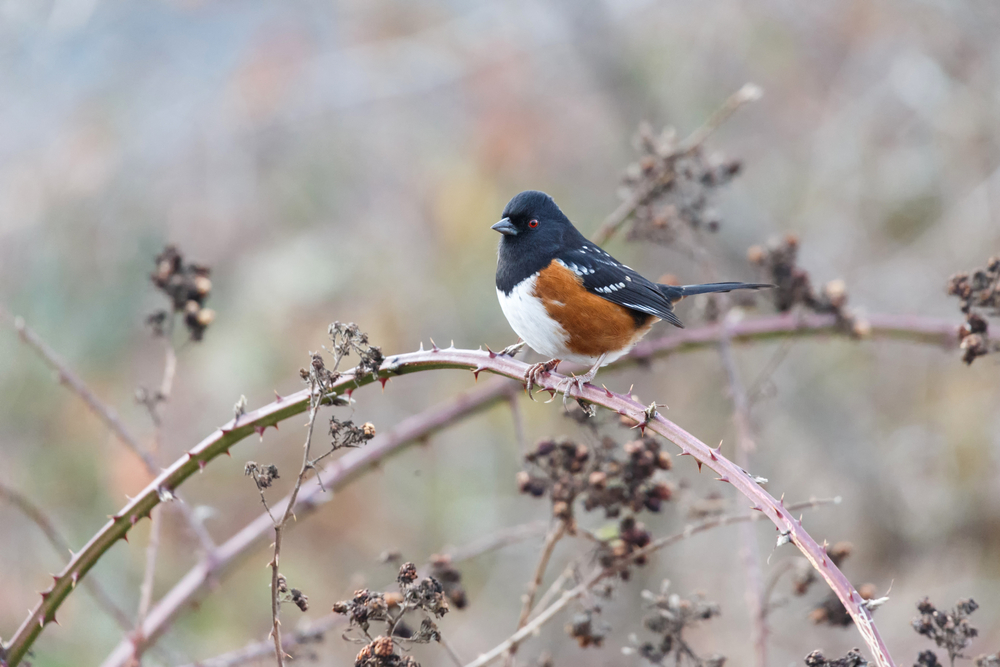
- Scientific Name: Pipilo maculatus
- Length: 6.7-8.3 in (17-21 cm)
- Weight: 1.2-1.7 oz (33-49 g)
- Wingspan: 11.0 in (28 cm)
Spotted towhees must be one of the most beautiful and ornate of all the New World sparrows. Their rusty red sides, white chest, red eyes, and white spots on their wings make them a real treat to see up close.
These are also one of the largest sparrows, with a wingspan of almost a foot across. Large numbers of them nest in localized areas of Colorado during the summer, but in winter, smaller groups of them can be found scattered throughout the state.
White-crowned Sparrow
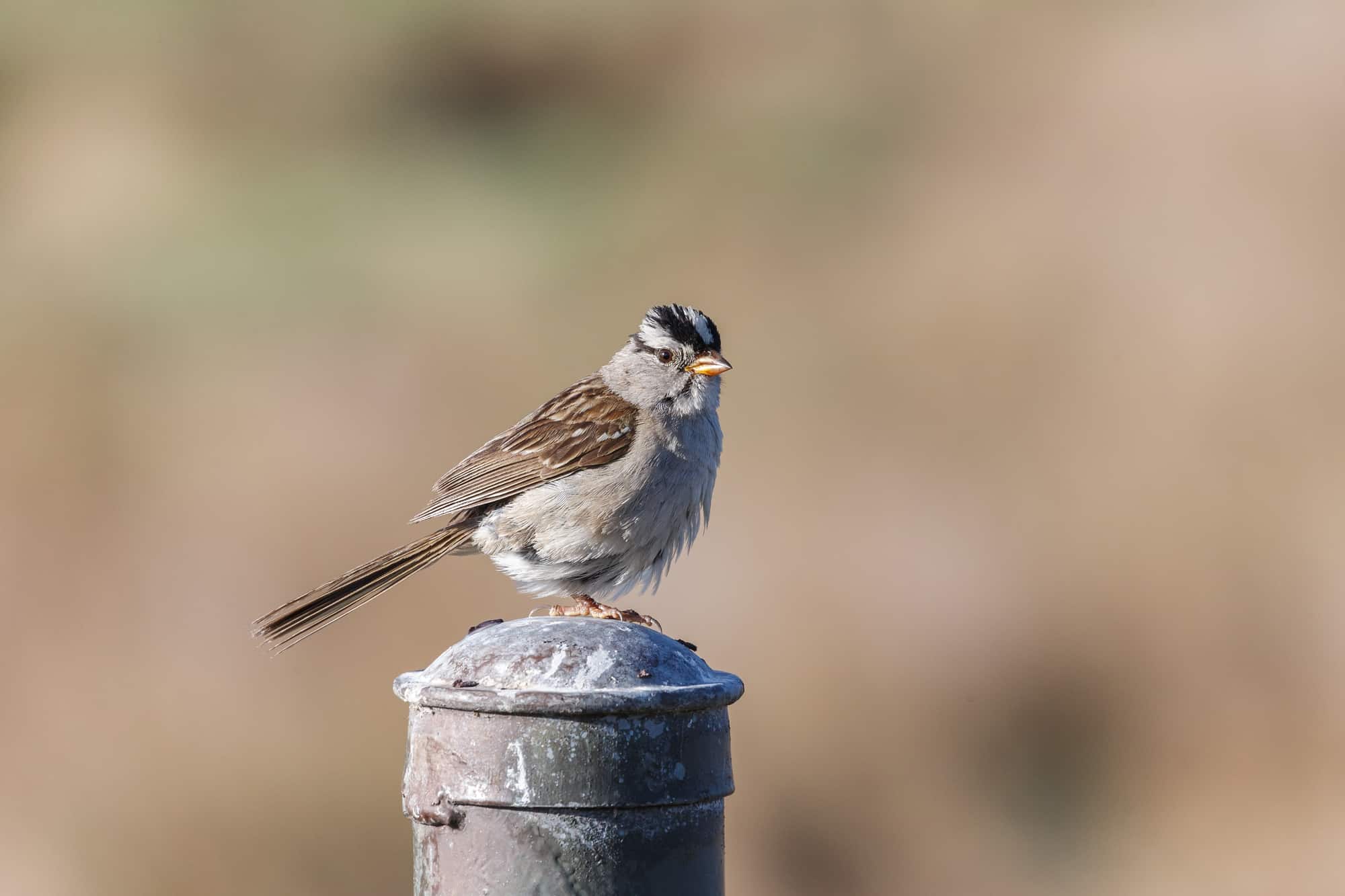
- Scientific Name: Zonotrichia leucophrys
- Length: 5.9-6.3 in (15-16 cm)
- Weight: 0.9-1.0 oz (25-28 g)
- Wingspan: 8.3-9.4 in (21-24 cm)
White-crowned sparrows are a fairly distinctive sparrow species, with well-defined black and white stripes across their head, and a yellowish beak. Their song is warbling and almost mechanical-sounding.
These birds can be found year-round in Colorado and may be attracted to your backyard feeder if you offer them oily seeds such as black oil sunflower seeds and pumpkin seeds. They will also eat berries from your garden bushes!
Chipping Sparrow
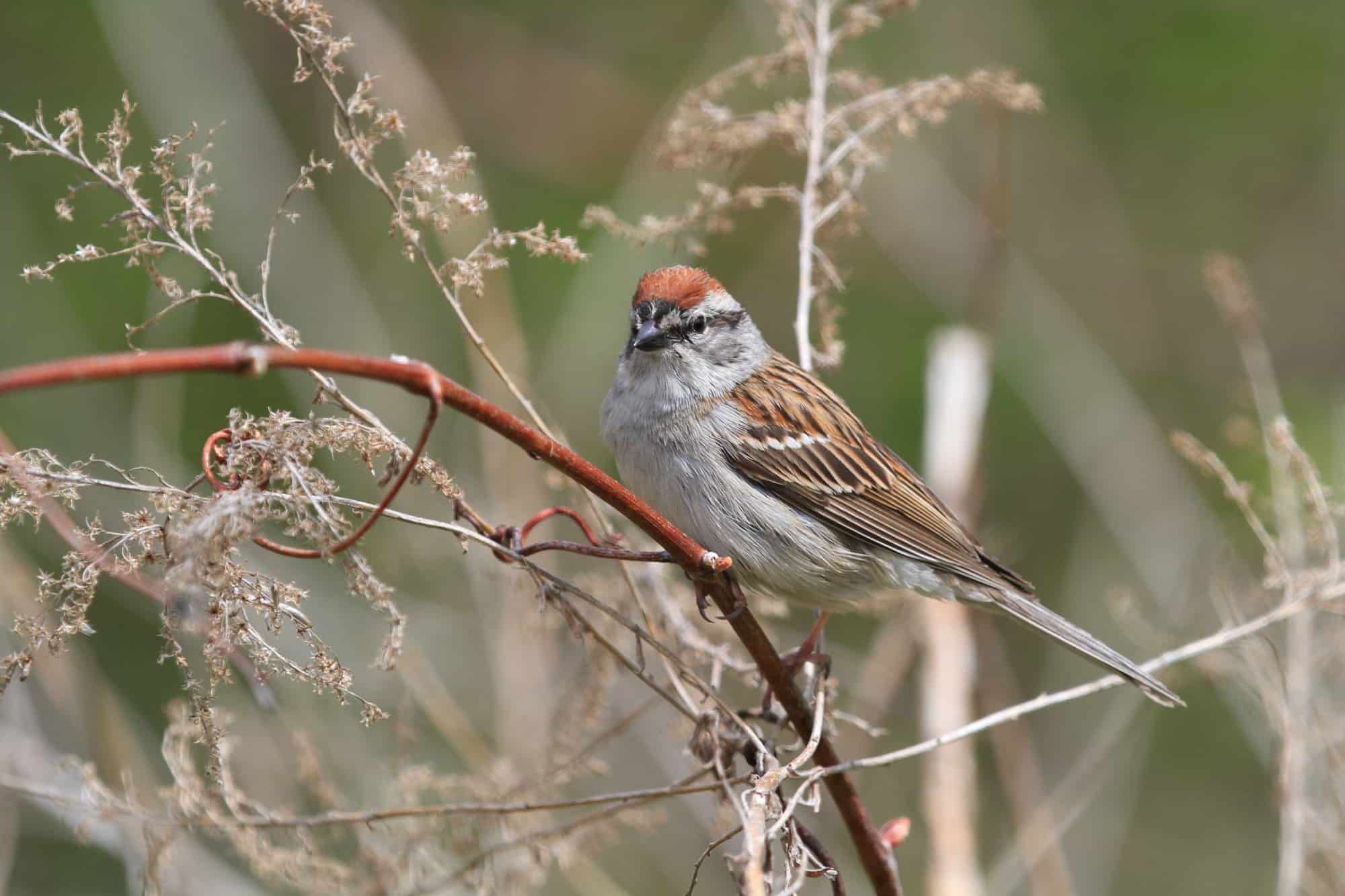
- Scientific Name: Spizella passerina
- Length: 4.7-5.9 in (12-15 cm)
- Weight: 0.4-0.6 oz (11-16 g)
- Wingspan: 8.3 in (21 cm)
Chipping sparrows are fairly small, slender sparrows that usually only weigh around half an ounce! Their long tails, rusty red crown, and black eye line are the best ways to identify them. They are also fairly tame birds, so you may be lucky enough to see one close-up.
This species nests in the mountainous west of Colorado and may be seen migrating over the eastern plains too, but it is never seen here in winter. Not surprisingly, these little birds prefer the mild climates of the southern states and Central America to the harsh, frosty winters of Colorado!
Vesper Sparrow
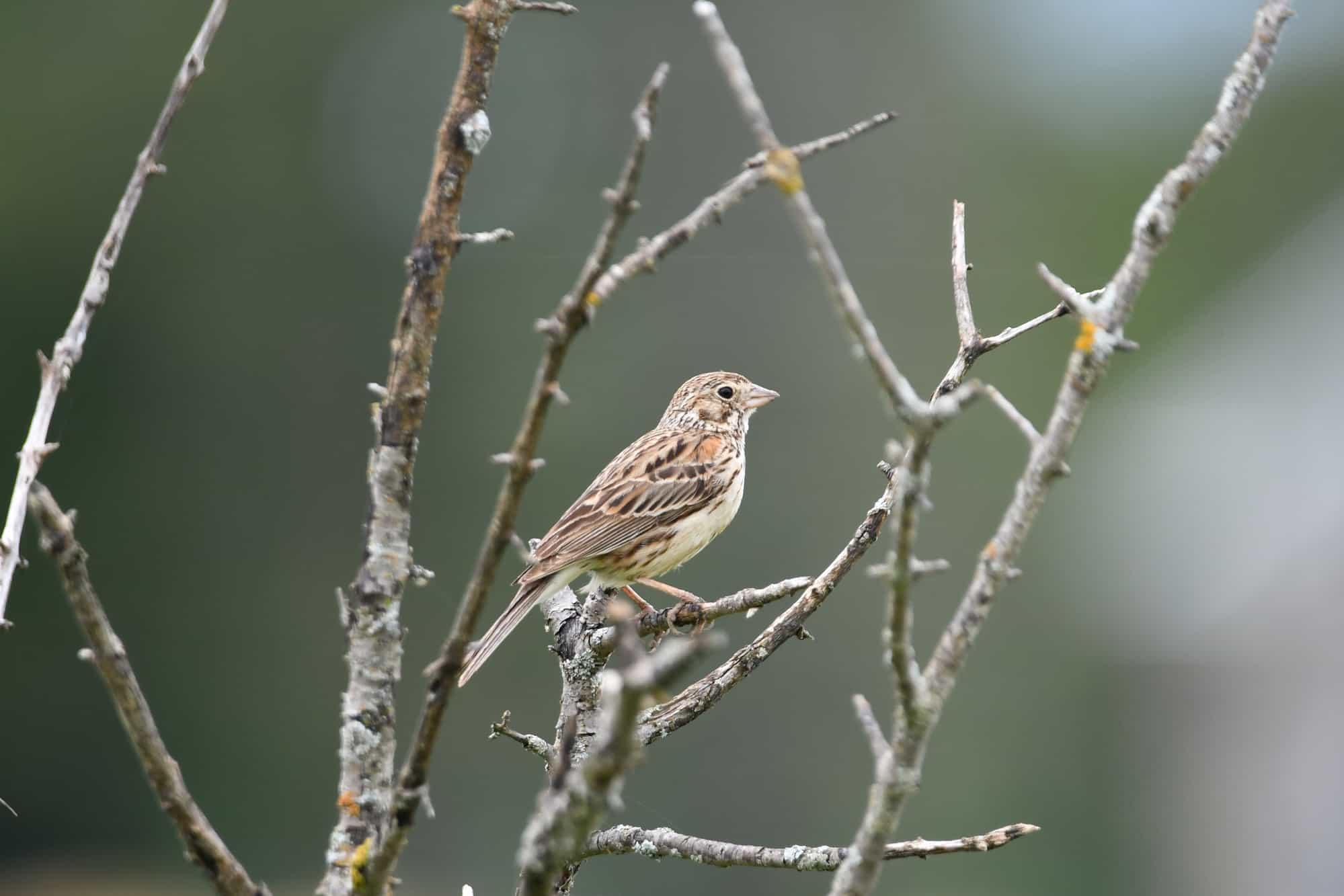
- Scientific Name: Pooecetes gramineus
- Length: 5.1-6.3 in (13-16 cm)
- Weight: 0.7-1.0 oz (20-28 g)
- Wingspan: 9.4 in (24 cm)
This round, chunky sparrow is only a summer visitor in Colorado when it can be found nesting all across Colorado except the very easternmost part of the state. After that, they fly to the more southerly states and Mexico to overwinter.
Vesper sparrows prefer to inhabit open, scrubby grasslands and build their nests on the ground out of the grass, tree bark, and moss. Males like to attract females by jumping in the air with their wings raised and singing loudly. Quite a spectacle if you’re lucky enough to see it!
Lark Sparrow
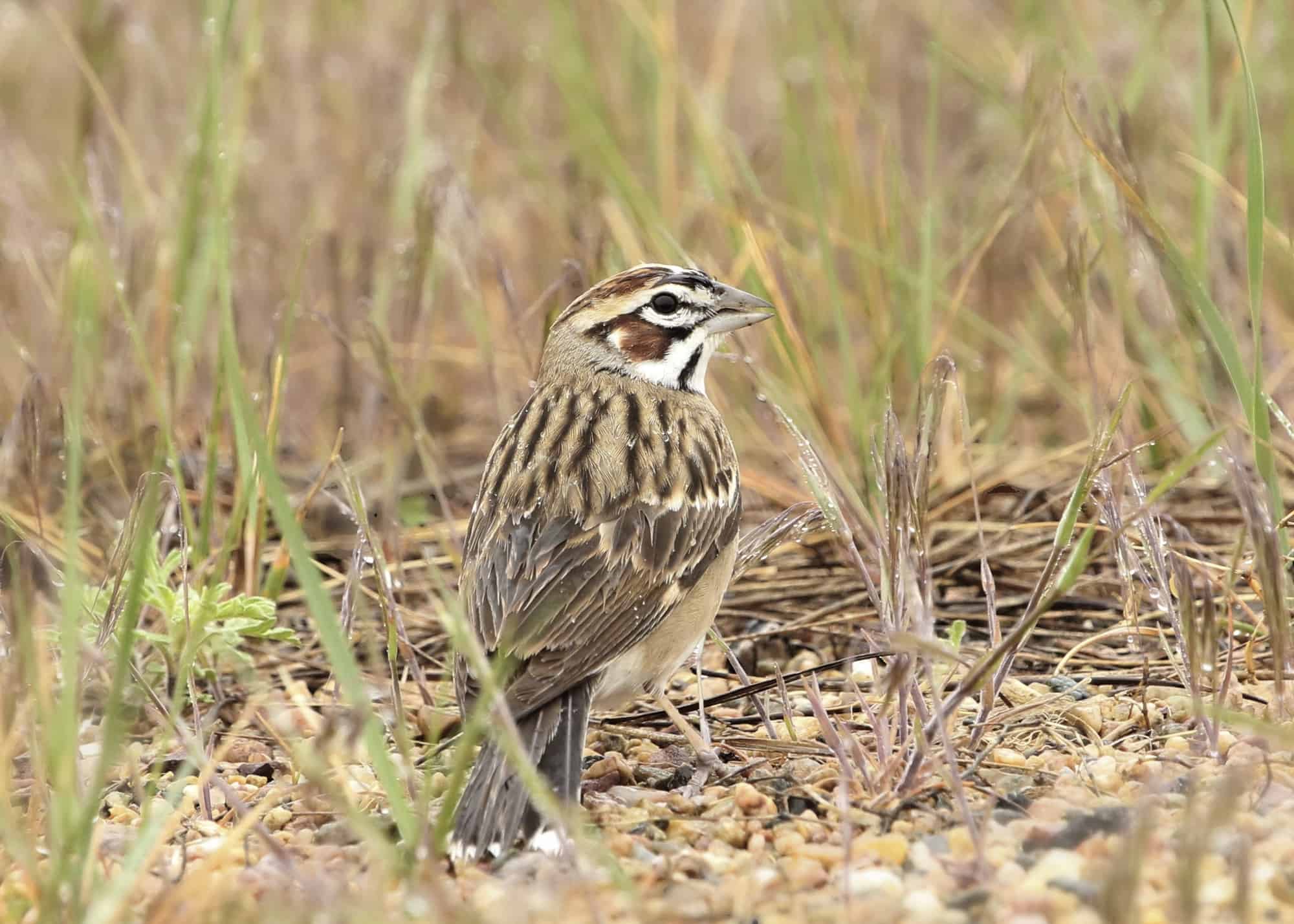
- Scientific Name: Chondestes grammacus
- Length: 5.9-6.7 in (15-17 cm)
- Weight: 0.8-1.2 oz (24-33 g)
- Wingspan: 11.0 in (28 cm)
Much like the vesper sparrows, lark sparrows are summer residents in Colorado that like to nest on the ground in open, grassy habitats. Their diet consists mainly of seeds, but they may eat a large quantity of protein-rich insects and spiders during the breeding season too!
One of the largest sparrows, the lark sparrow can migrate as far south as Guatemala, and has also occasionally drifted across the Atlantic Ocean to surprise birdwatchers in Western Europe!
Lincoln’s Sparrow
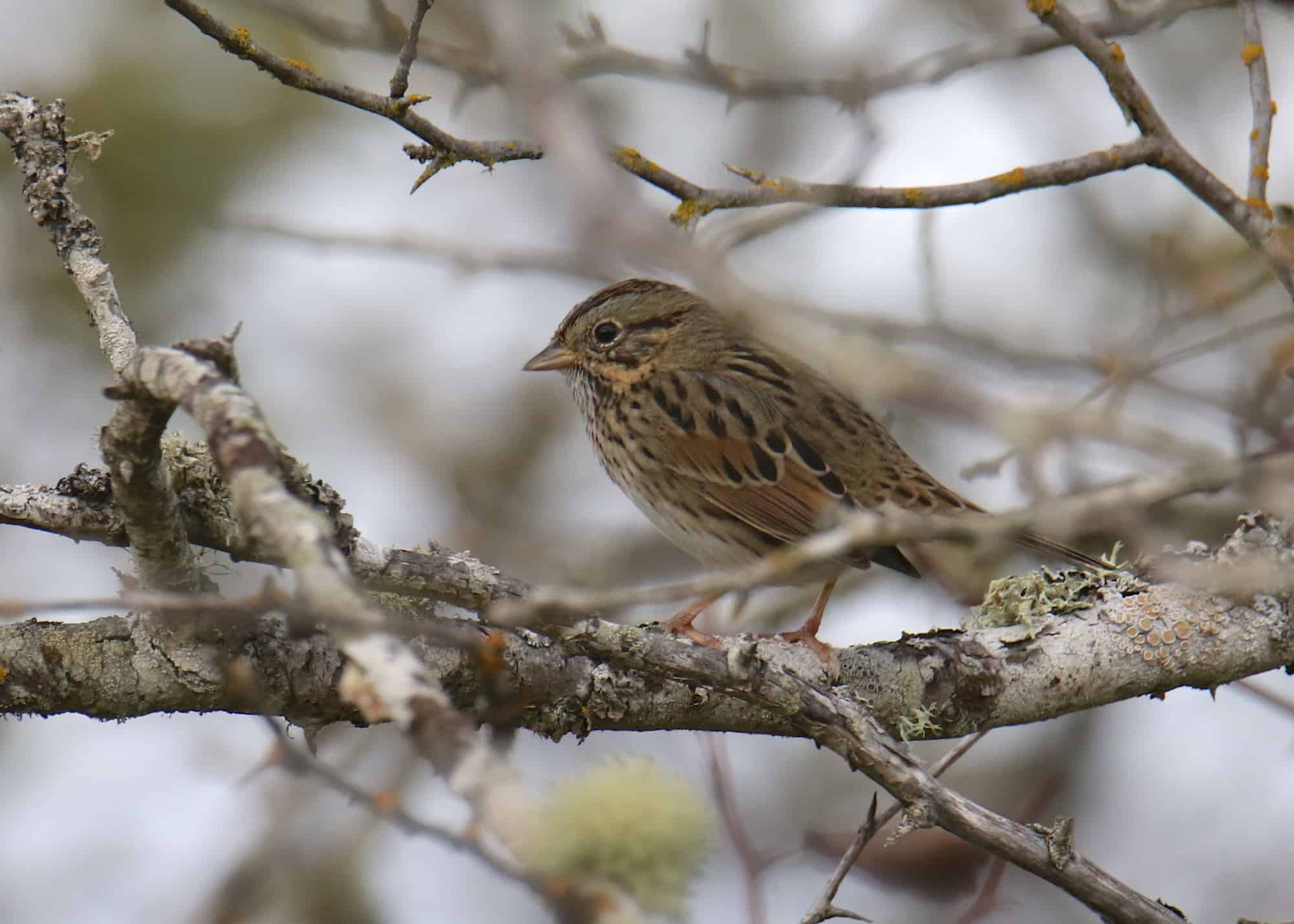
- Scientific Name: Melospiza lincolnii
- Length: 5.1-5.9 in (13-15 cm)
- Weight: 0.6-0.7 oz (17-19 g)
- Wingspan: 7.5-8.7 in (19-22 cm)
Lincoln’s sparrow can be found breeding throughout the mountainous west of Colorado during the summer but prefers to overwinter in milder climates.
This species seems to love staying near water. In the summer you can find them near streams and ditches, and in winter they prefer to congregate in humid forests and tropical jungles.
Although they look like many other sparrow species, the raised feathers on their crown can be a useful field mark of this bird.
Green-tailed Towhee
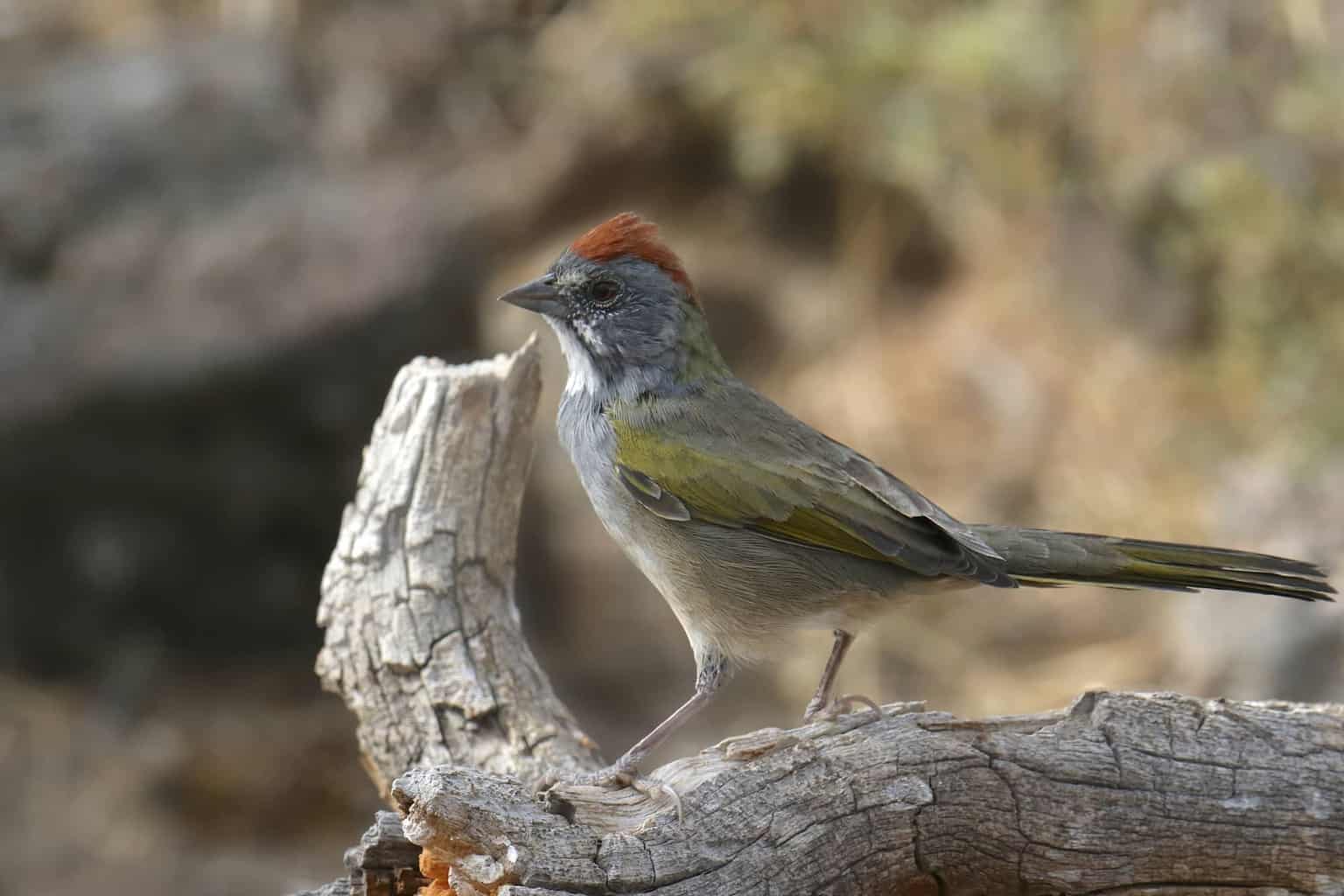
- Scientific Name: Pipilo chlorurus
- Length: 7.25 in (18.4 cm)
- Weight: 0.8-1.4 oz (21.5-39.4 g)
Green-tailed towhees are fairly exotic-looking birds, which isn’t surprising given that they spend much of the year in the tropical climates of Central America. This bird migrates each year to the Southwest United States to breed.
Easily recognized by its rusty red cap and green-tinted feathers on its wings, back, and tail, the green-tailed towhee may be a more common bird than many people imagine owing to its shy nature and ability to hide among the undergrowth.
This small towhee builds its nests on the ground from twigs, tree bark, animal hair, and grasses.
American Tree Sparrow
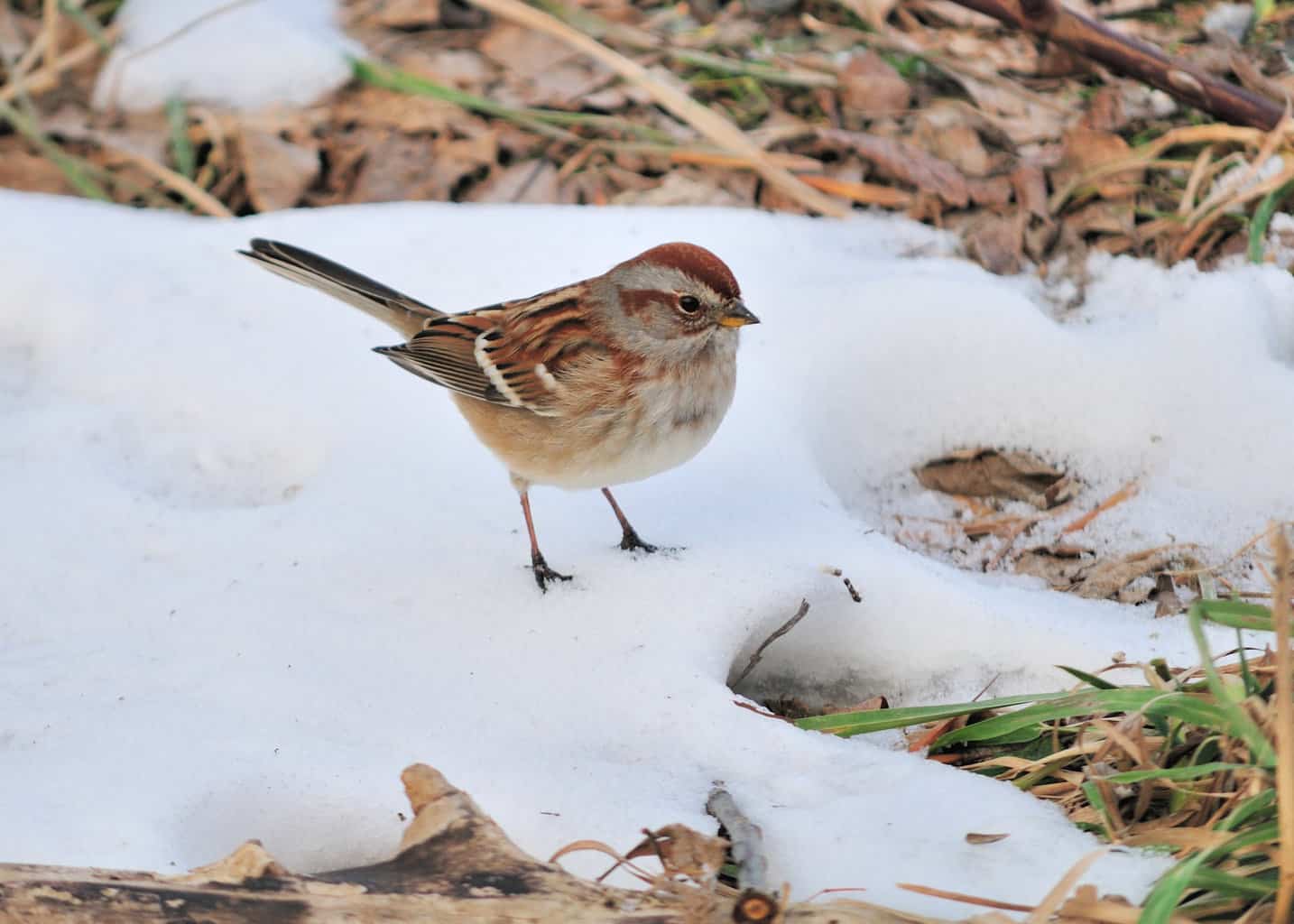
- Scientific Name: Spizelloides arborea
- Length: 5.5 in (14 cm)
- Weight: 0.5-1.0 oz (13-28 g)
- Wingspan: 9.4 in (24 cm)
The American tree sparrow is a hardy bird that merely overwinters in Colorado before returning to its breeding grounds which extend right up into the arctic circle!
Although named ‘tree sparrow’, this species prefers to spend most of its time on the ground! The name came from European settlers who thought that this bird resembled their native European tree sparrows.
Since it nests in the arctic tundra, nothing could be further from the truth!
Brewer’s Sparrow
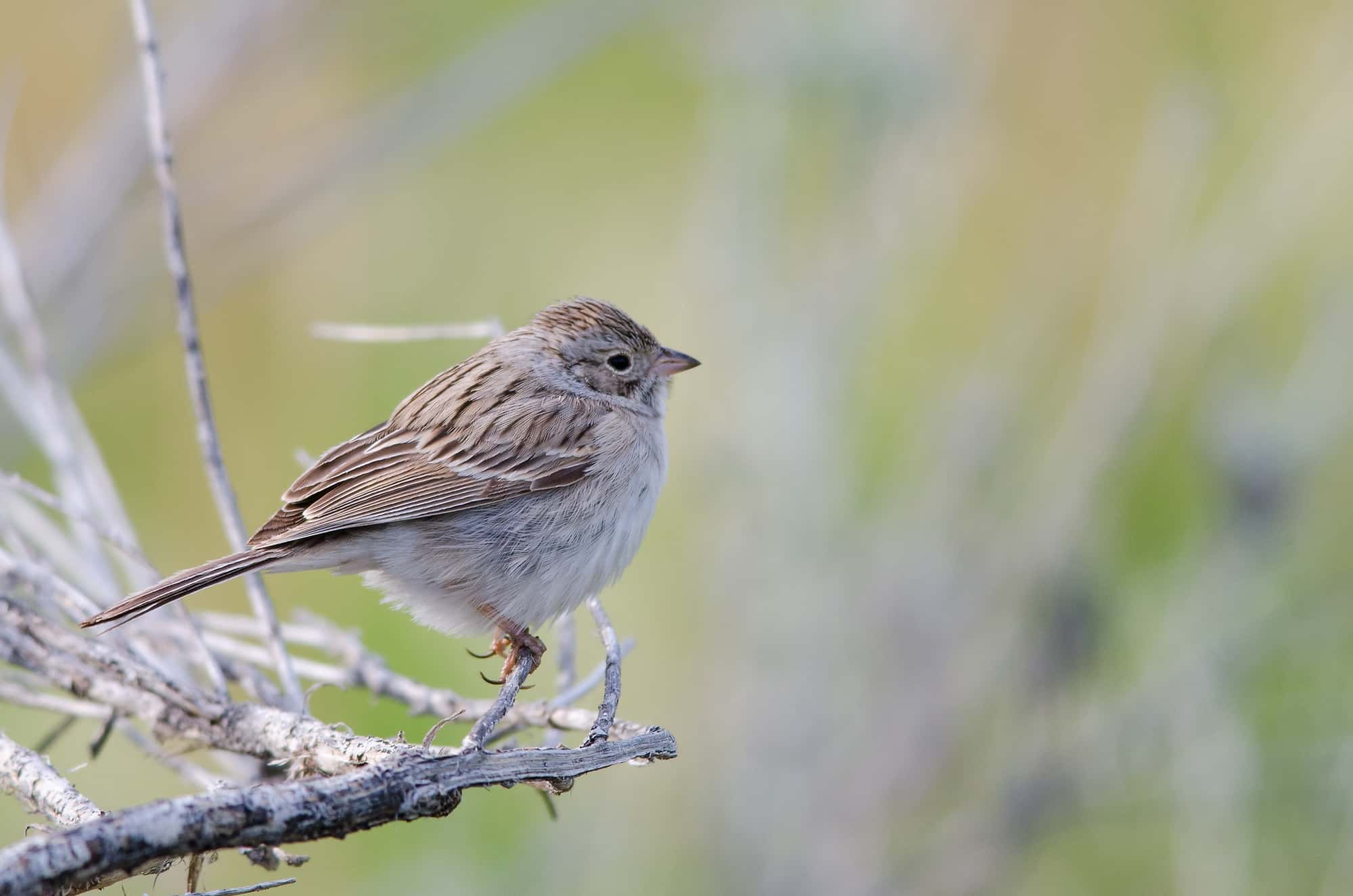
- Scientific Name: Spizella breweri
- Length: 5.1-5.9 in (13-15 cm)
- Weight: 0.4-0.5 oz (11-14 g)
- Wingspan: 7.1-7.9 in (18-20 cm)
At less than 6 inches long, Brewer’s sparrows are the smallest sparrow in the United States. They’re present in Colorado from mid-April until October when they build their nests among shrubs from dry grass in arid, sagebrush areas.
What this little bird lacks in size, it makes up for in courage. Amazingly, Brewer’s sparrows can sometimes be seen chasing away large birds of prey from their nests!
Lark Bunting
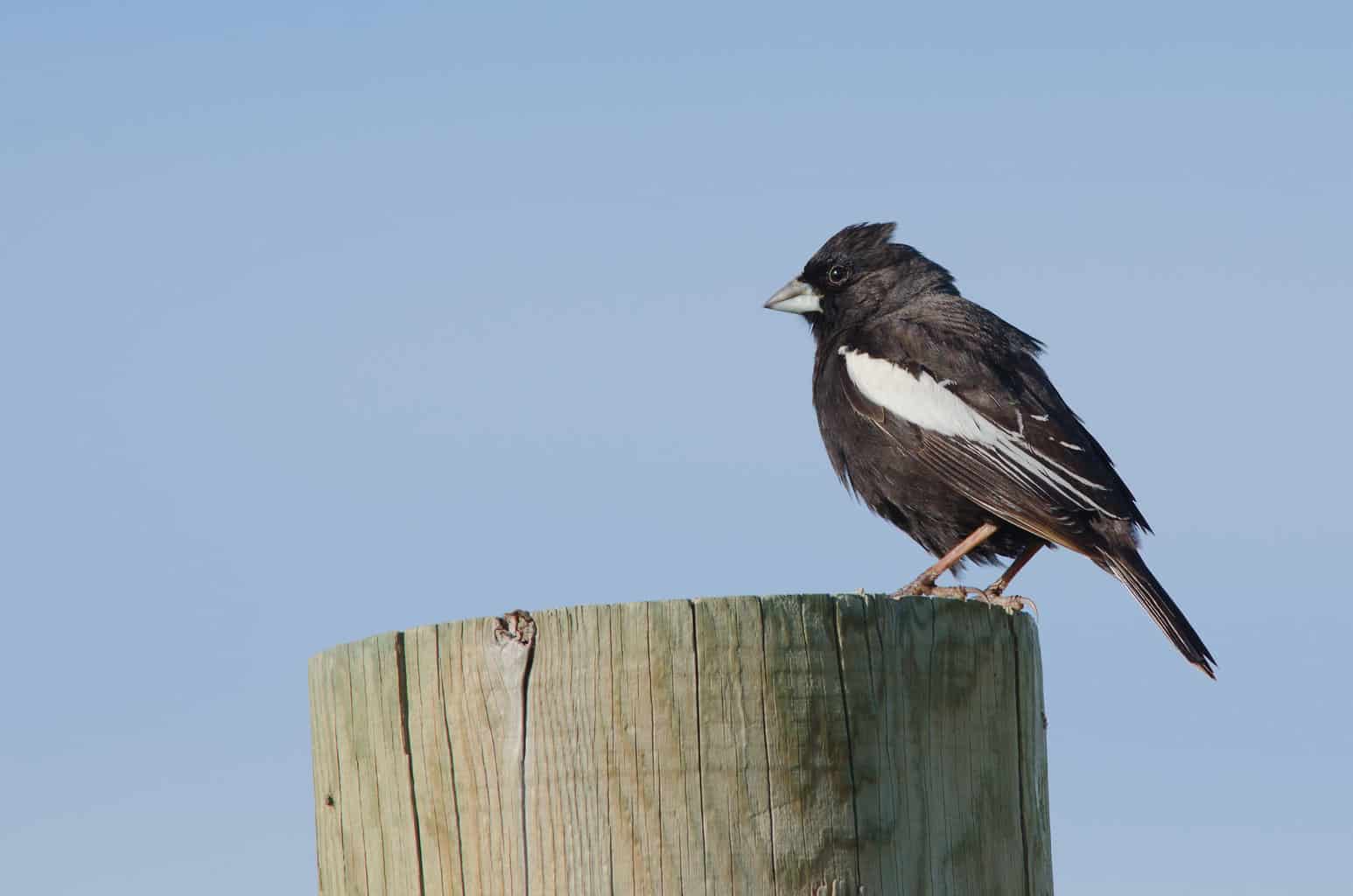
- Scientific Name: Calamospiza melanocorys
- Length: 5.5-7.1 in (14-18 cm)
- Weight: 1.3-1.5 oz (35.3-41.3 g)
- Wingspan: 9.8-11.0 in (25-28 cm)
During the breeding season, male lark buntings are one of the most beautiful and distinctive of all sparrows in America. Their jet-black bodies with bright white patches on their wings make them hard to mistake for any other bird.
Perhaps it’s this mixture of beauty and singularity that made Colorado adopt the lark bunting as their national state bird in 1931.
Despite the accolade, this treasured bird species nests only in the eastern and most northwestern parts of Colorado in dispersed colonies. Their nest is an open cup, usually built on a mound in a grassy area.
In winter they can only be found in the very southwestern corner of the state, when the male’s plumage changes to a dull brown color, much like the female’s.
Savannah Sparrow
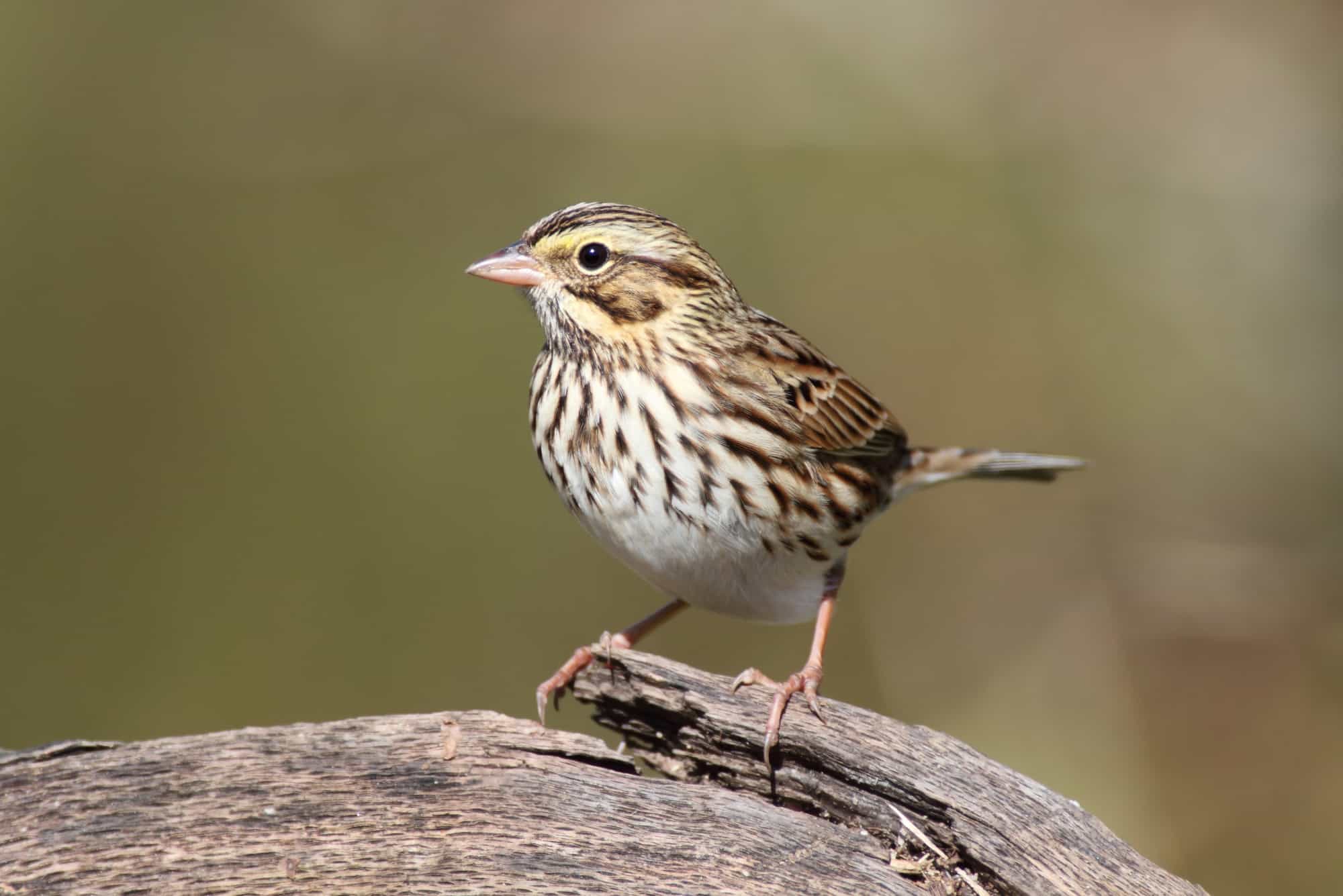
- Scientific Name: Passerculus sandwichensis
- Length: 4.3-5.9 in (11-15 cm)
- Weight: 0.5-1.0 oz (15-28 g)
- Wingspan: 7.9-8.7 in (20-22 cm)
As their name suggests, savannah sparrows prefer to spend their time out in grassy habitats rather than near human habitation. Although difficult to identify from a distance, closer inspection reveals a yellow patch on their eye – their most reliable field mark.
This species only nests in the northwest of Colorado, but they can be seen all across the state during the spring and autumn migratory seasons.
Clay-colored Sparrow
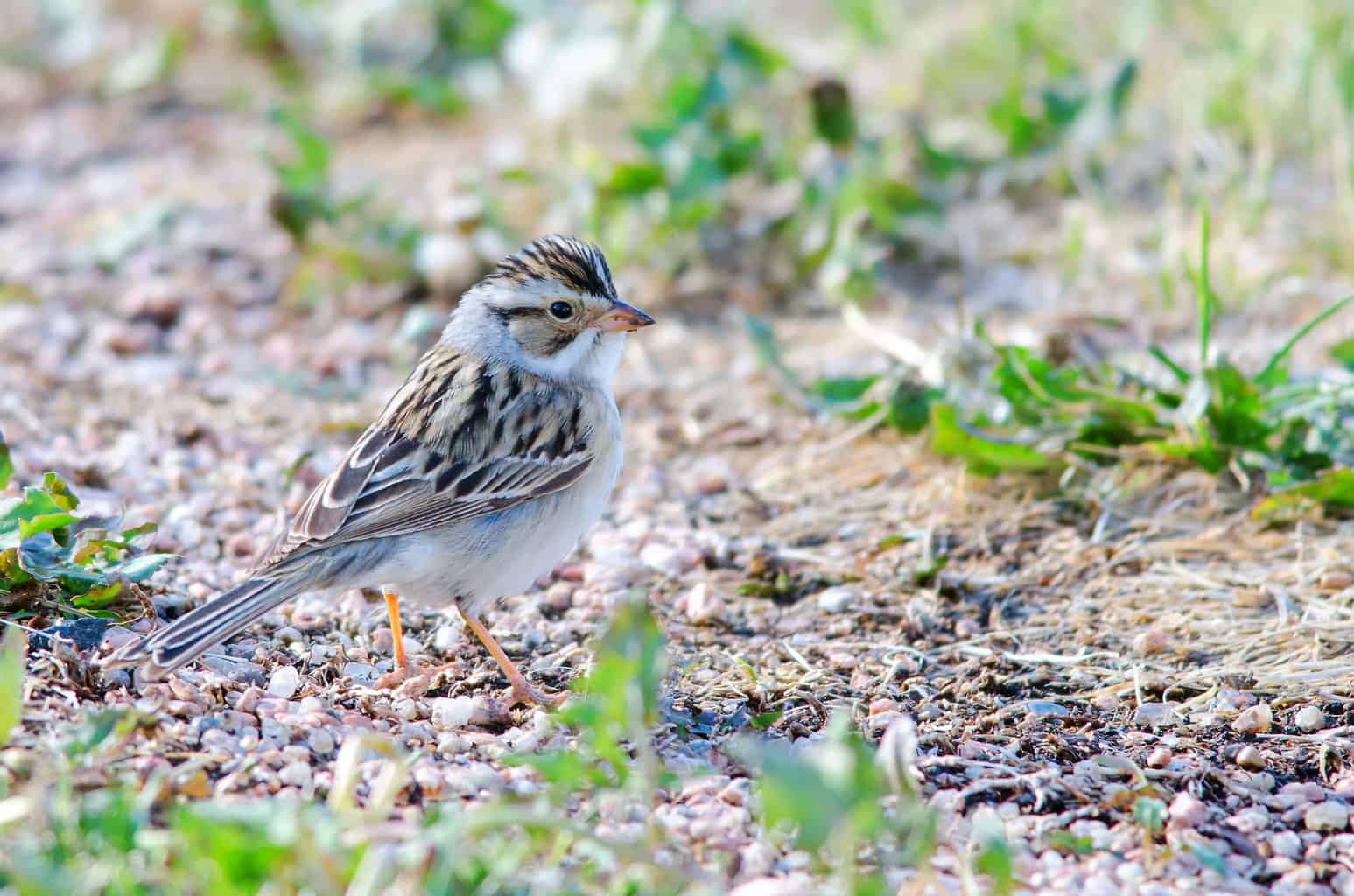
- Scientific Name: Spizella pallida
- Length: 5.1 – 6 in (13 – 15 cm)
- Weight: 0.42 oz (12 g)
- Wingspan: 7.5 in (19 cm)
Clay-colored sparrows are almost as tiny as the diminutive Brewer’s sparrow. Their other distinguishing features include the gray collar around their necks and the notch in their tails.
You can also identify the clay-colored sparrow from its voice which sounds more like a cicada than a sparrow!
Despite only being a passing migrant in Colorado, these sparrows are frequently seen during the spring and fall migratory seasons, when they fly from Central America to their breeding grounds in the Northern United States and Canada.
Canyon Towhee
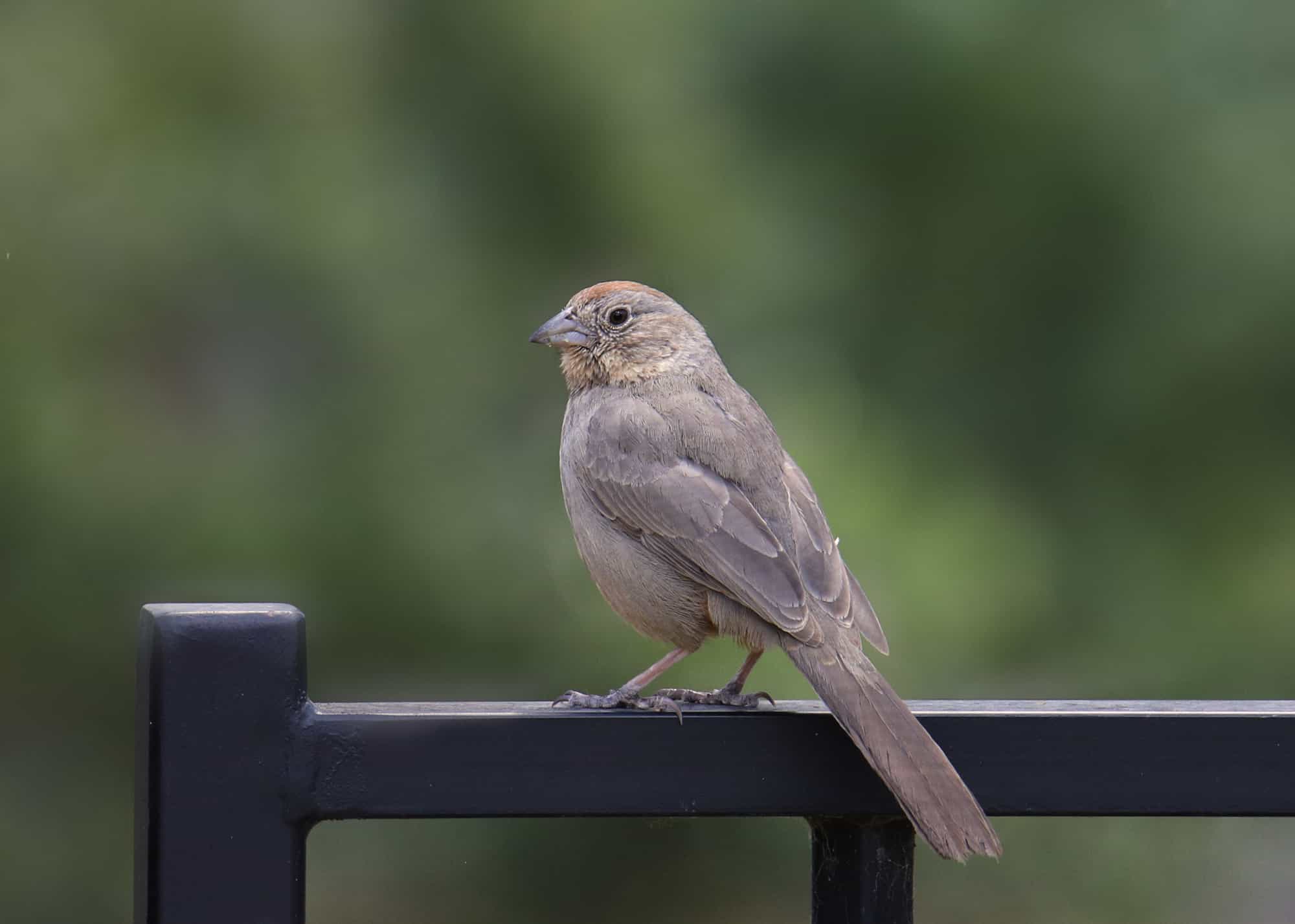
- Scientific Name: Melozone fusca
- Length: 8.3-9.8 in (21-25 cm)
- Weight: 1.3-1.9 oz (37-53 g)
- Wingspan: 11.5 in (29.21 cm)
Southern Colorado is right on the northernmost edge of the Canyon Towhee’s range, a bird that doesn’t migrate but prefers instead to remain in the same areas throughout the year.
Although their gray plumage is very plain and difficult to tell apart from other similar birds, they are best identified by their large size, long tail, and repetitive chirping call. A closer inspection also reveals a subtle rusty brown cap.
Grasshopper Sparrow
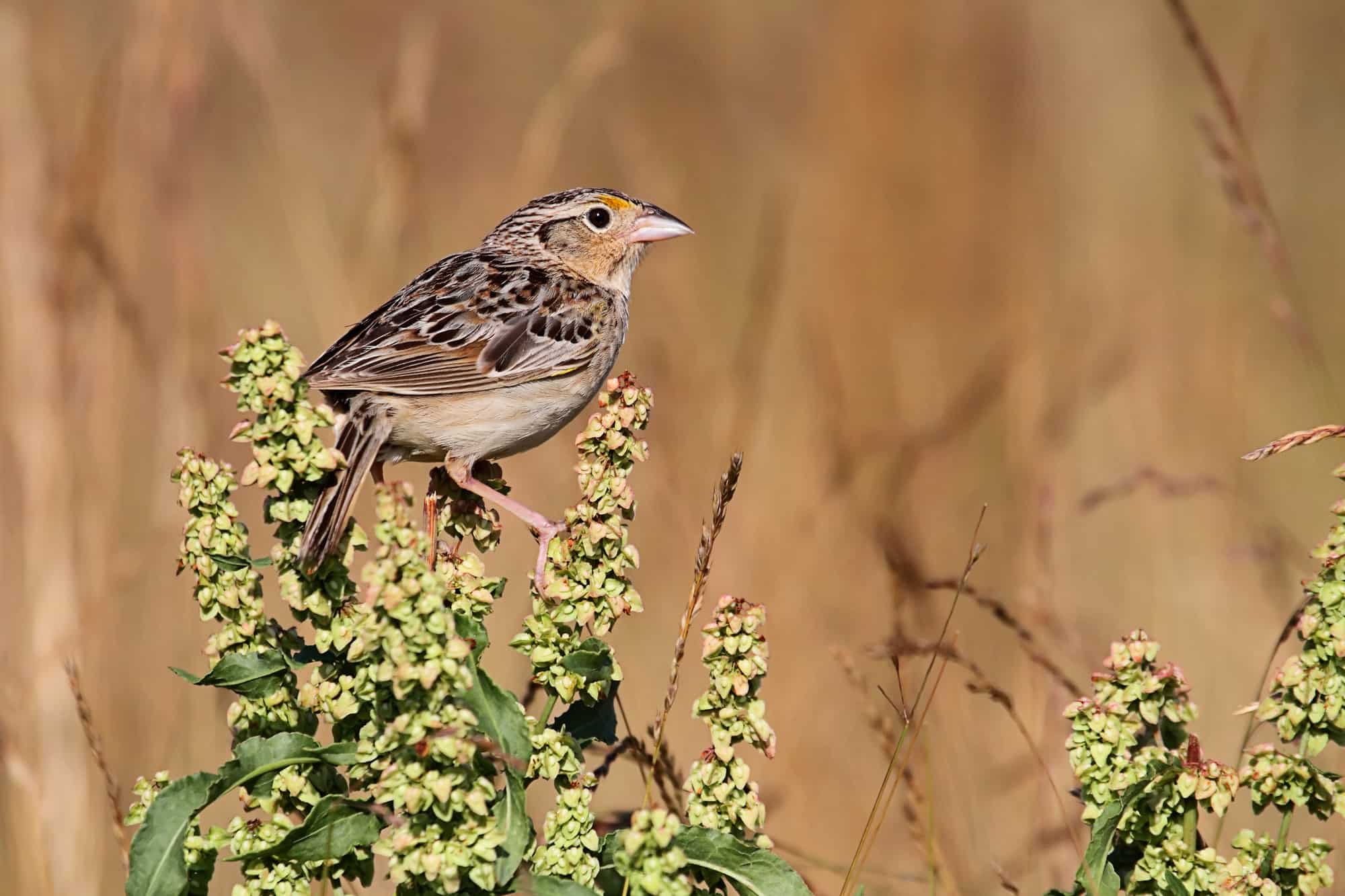
- Scientific Name: Ammodramus savannarum
- Length: 4.5-4.9 in (10.8-11.5 cm)
- Weight: 0.5-0.7 oz (14-20 g)
- Wingspan: 7.9 in (20 cm)
Grasshopper sparrows are another tiny sparrow that has a disproportionately large wingspan compared to the rest of their bodies.
Their Latin name savannarum reveals the favorite habitat of this bird, and in Colorado, you’ll only find them breeding on the high plains in the east of the state. They overwinter further south.
Grasshopper sparrows earned their name from their insect-like buzzing song, but they also love eating grasshoppers in their grassland habitats.
Fox Sparrow

- Scientific Name: Passerella iliaca
- Length: 5.9-7.5 in (15-19 cm)
- Weight: 0.9-1.6 oz (26-44 g)
- Wingspan: 10.5-11.4 in (26.7-29 cm)
Fox sparrows are one of the largest birds on our list. With a wingspan of almost a foot across, they can also weigh more than one and a half ounces!
In Colorado, the fox sparrow is only found in the westernmost part of the state during the breeding season. Although there are four different sub-species of this bird, the types that you’ll find nesting in Colorado are slate-colored fox sparrows.
Looking a bit like a thrush, fox sparrows also have a tuneful whistle that could almost pass for a thrush species!
Harris’s Sparrow
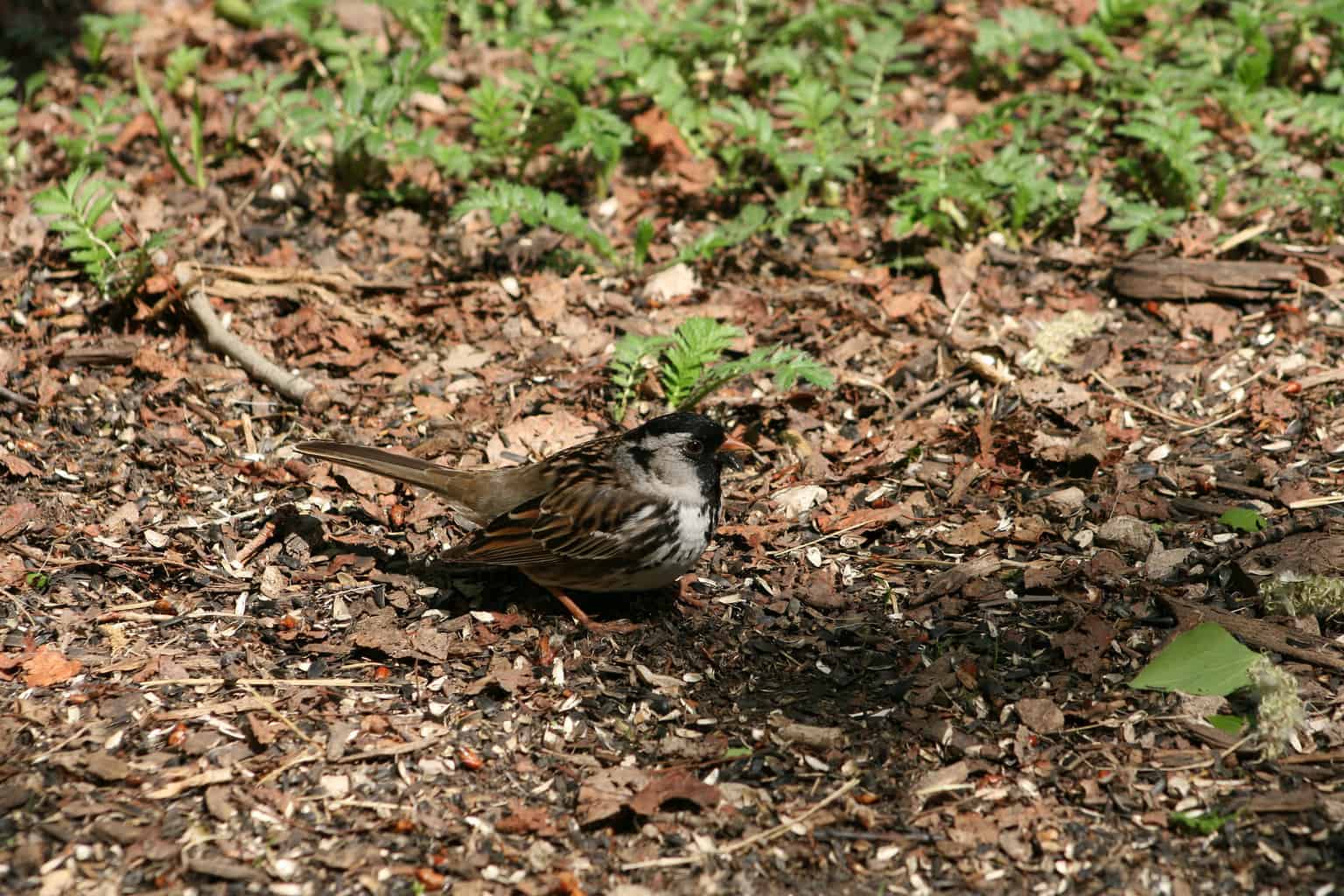
- Scientific Name: Zonotrichia querula
- Length: 6.7-7.9 in (17-20 cm)
- Weight: 0.9-1.7 oz (26-49 g)
- Wingspan: 10.6 in (27 cm)
Harris’s Sparrow is a fairly large, hardy sparrow that breeds in the northern tundra and is plenty tough enough to stick out the winters on the eastern fringes of Colorado.
This species is considered near-threatened in North America, but you can help them out by feeding them sunflower seeds, millet, and cracked corn during the winter months.
Cassin’s Sparrow
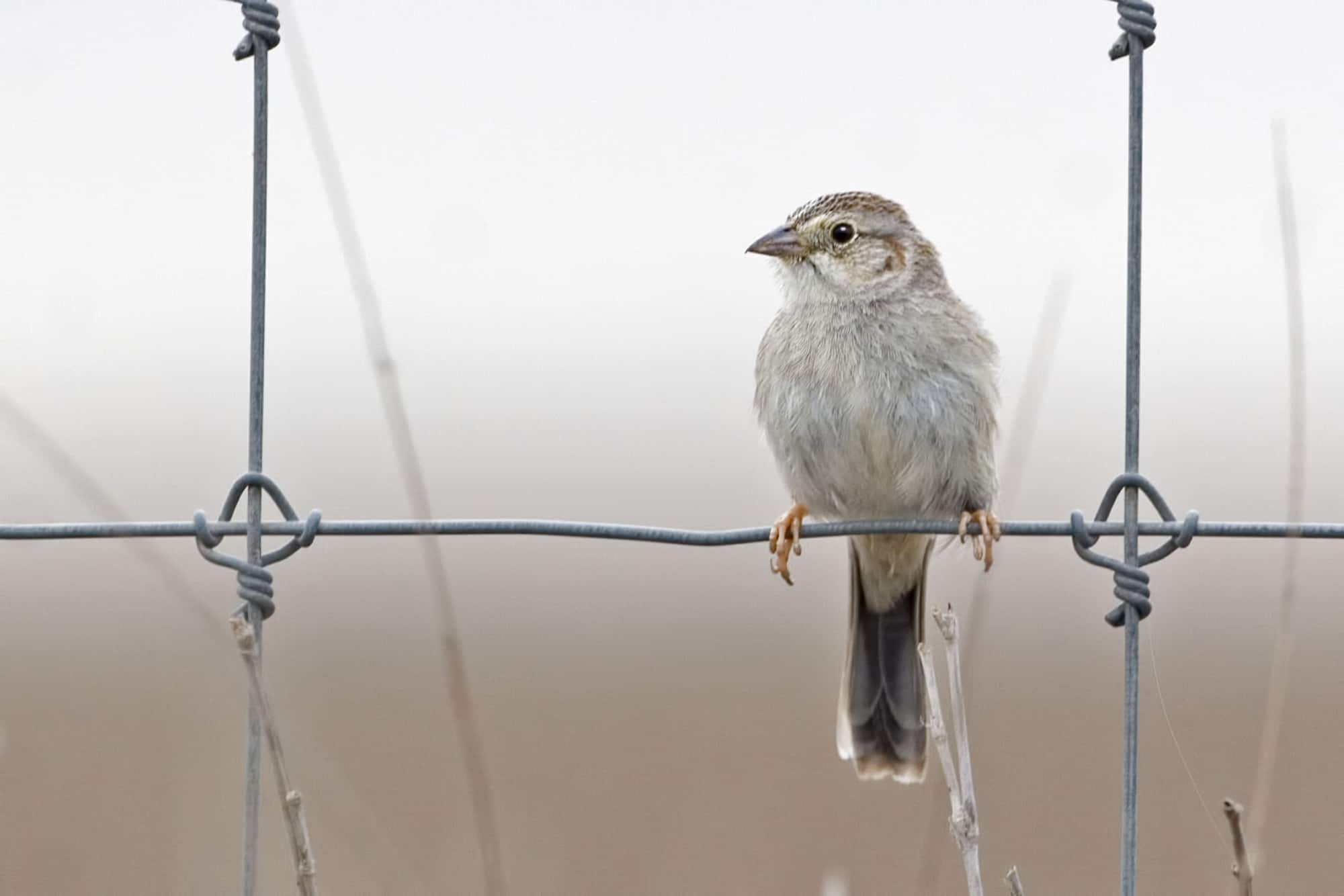
- Scientific Name: Peucaea cassinii
- Length: 5.1-5.9 in (13-15 cm)
- Weight: 0.6-0.7 oz (16-21 g)
- Wingspan: 7.9-8.5 in (20 – 22 cm)
Colorado is towards the northernmost point of the Cassin’s sparrow’s range, and it’s only an infrequent summer visitor here. Preferring scrubby grasslands, this tiny bird can be found nesting in low-growing shrubs in the eastern part of the state.
During the breeding season, Cassin’s sparrow may rely heavily on grasshoppers as a food source for their young. The preservation of wild grasslands will be essential for the long-term well-being of this bird.
A Few That Got Away!
Because Colorado is such a geographically diverse state en route to many sparrows’ migration paths, it would be difficult to cover all of them in a single guide.
Some of the rarer sparrows that you might find here include the black-throated sparrow and the rufous-crowned sparrow – rare residents in Colorado and prized spottings!
Of the sparrows that merely pass through the state on their spring and fall migration routes, the three that you’re most likely to see are the clay-colored sparrow, white-throated sparrow, and swamp sparrow.
Conclusion
A great diversity of sparrows can be found in every corner of Colorado, throughout the year.
Whether you’re enjoying Harris’s sparrows eating from your backyard feeder in the city, watching white-spotted towhees nesting in the mountains, or trying to catch a glimpse of the rare Cassin’s sparrow in the eastern plains, there are endless opportunities to get more familiar with these cute little birds.
Apart from sparrows, there are nearly 500 other bird species that you can see in Colorado. You can find out more about some of the most exciting and beautiful of them in our birding guide to the state here.

